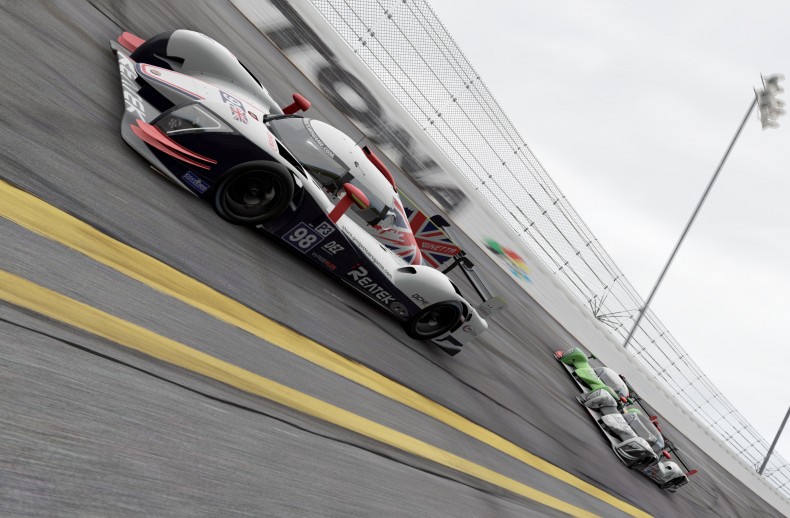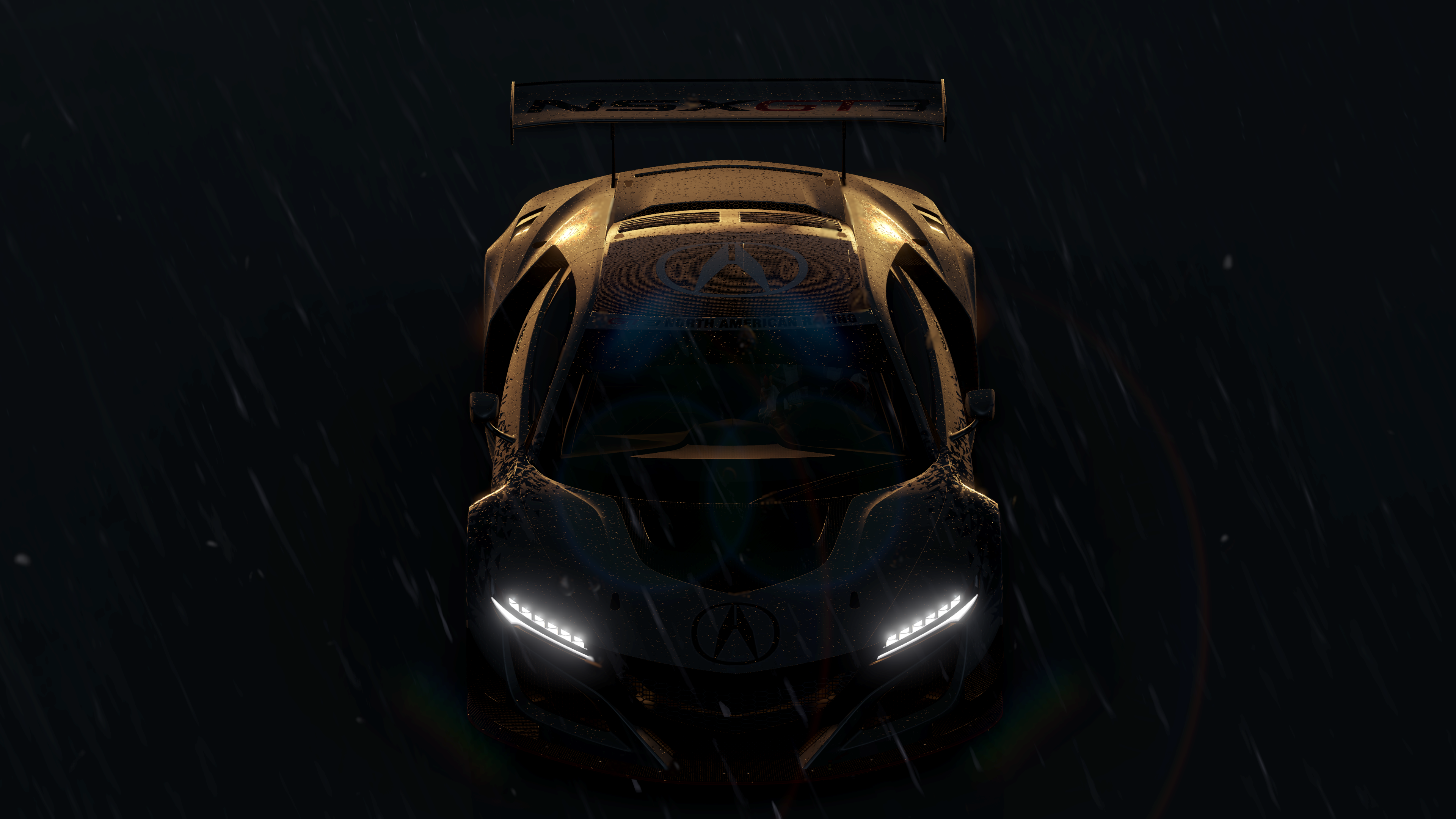There are a few sexy ways to start a Project CARS 2 article: erotic car fan fiction, my holiday snaps from Tenerife last year, some sort of combination of the two. Recapping a presentation about dynamic weather, however? Probably not the sort of material that will start raging fires burning in your gaming crotch. But a presentation was the easiest way for creative director Andy Tudor to relay the additions of Project CARS 2 to us, and therefore, recapping that presentation is the easiest way for us to relay those differences to you. And sometimes easier is better than sexy. Or so I’ve heard.
Ahem.
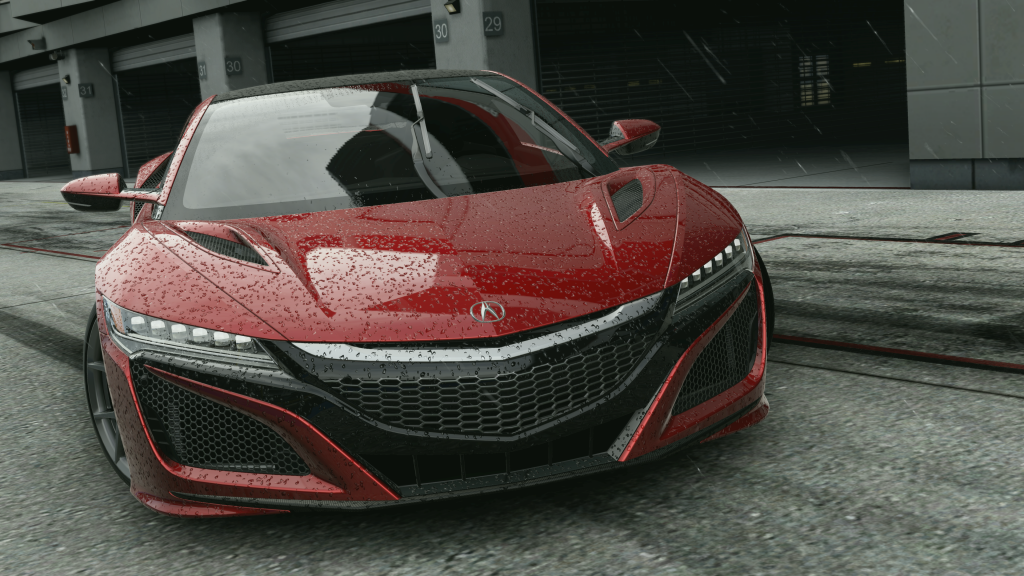
The opening salvo of the presentation is that Project CARS 2 now has a day/night cycle and dynamic weather. You might not get excited about sunshine turning to rain during a race but Slightly Mad Studios is really excited about it. When it rains in Project CARS 2, the track soaks up the water… until there’s nowhere for the water to go, then puddles form. Just like real life. Unless it’s on a slope, then the water slinks downhill. Just like real life. Or unless lots of cars have been driving through the shallow puddles, making them disperse. Just like real life. Where there’s water, you need to adjust your driving, as familiar corners become flooded and water makes previously-safe turns treacherous.
And yes, that was almost an entire paragraph about puddles and three repetitions of ‘just like real life’.
At this point you might be thinking good grief, God Is A Geek has lost the plot, I remember the good old days when they went to London to milk virtual cows instead of writing about bloody puddles. But there’s a point to this and a reason why Slightly Mad Studios is so keen to hammer home dynamic weather.
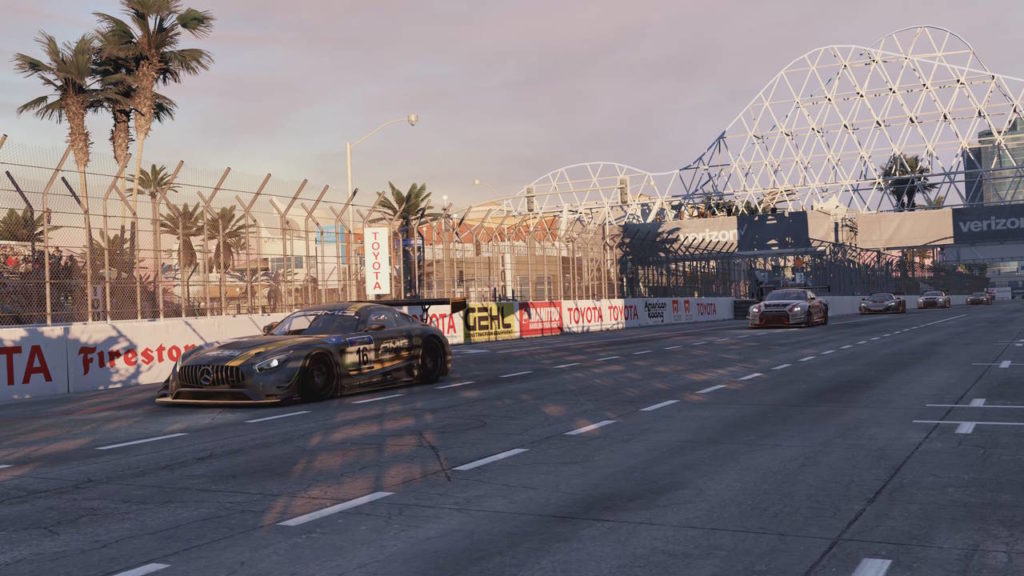
Racing games are either competing to be a rollercoaster ride of powersliding arcade thrills, where your main method of slowing down for corners is bumping into other cars rather than using the brakes (Driveclub, Forza Horizon), or ultra-realistic simulators that give you the thrill of driving while you’re lying half-comatose on your sofa (Gran Turismo, Forza Motorsport). Project CARS is firmly in the latter camp and with its sequel, it’s looking to wrap up any details the original missed. The dynamic weather does just that, with aesthetic changes and gameplay implications, whether it’s wind, rain, snow, or even sunshine returning to the track while you race.
There are even seasonal changes as well, with Fuji Speedway undergoing changes throughout summer, autumn, winter, and spring. Tracks also deteriorate and welt under sustained abuse from race cars, both across the course of a single race and a season. Short of having bugs fly into your windscreen or the driver needing a poo during long races, it’s hard to see what other details could even be included in Project CARS 2.
And this is a racing series that’s known for its detail. Weather out the way, Andy then tells us how they captured the data for each race track. Previously, photographers used to visit the track and take pictures of each individual section, for the studio to build back at their computers. Now, because it’s 2017, Slightly Mad Studios flew a drone over the track and captured data that way. How modern!
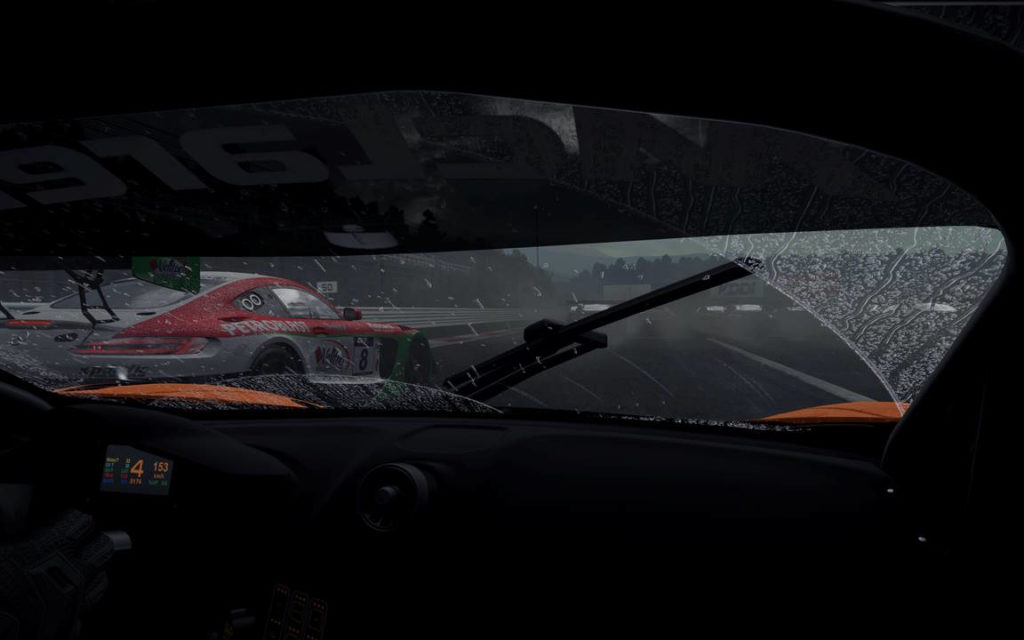
Andy then calls up a slide which is a track overlaid with an eye-melting mess of green intersecting lines, tiny numbers and code. “A programmer gave me this” he says. “Can you tell?”
Yes. Yes, we can.
We don’t know every inch of Fuji Speedway by hand but it seems impossible to think that Project CARS 2 will have iconic tracks that aren’t so much as a single millimetre off, given the amount of effort and detail that has gone into the pursuit of realism here. Andy doesn’t seem like the sort of guy who’ll accept it and if he doesn’t, their army of drones definitely won’t accept it. We’ve seen Terminator 2. We know what robots can do when they’re pissed off.
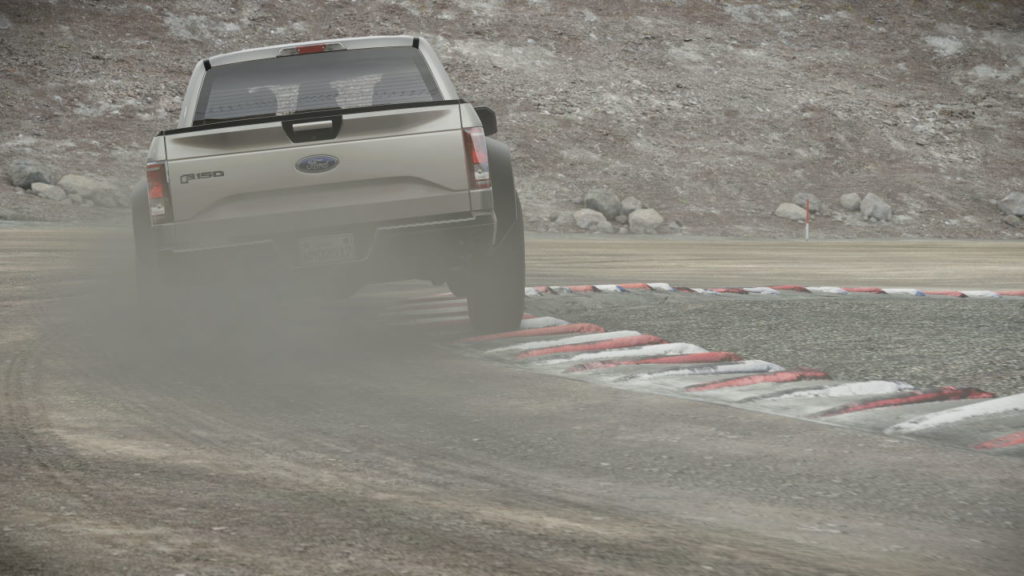
There’s a huge eSports push powering the multiplayer side of the game, with online championships, a dedicated broadcaster mode and a permanent rank on your driver’s license (virtual, not real) matching you against opponents of your skill. It’s powered under the hood by ELO sorcery that we won’t even pretend to understand but what it boils down to is that if you’re a casual racer who just wants to screech around a few corners before Eastenders is on, you won’t be matched up with Nico Rosberg wannabes.
All this talk is good but playing it really highlights how far the series has come in just its second game. North Circuit in Iceland is the first track where we get to see the weather changes in effect, along with the day/night cycle. The green haze of the Northern Lights weave their way through the gloomy evening skies, with starry night soon rolling in and casting its serene darkness over the track. Which all sounds very poetic and serene, if it also wasn’t the hardest course in the world. You see, being Iceland, the track itself is frozen solid and grip is at a premium. The smallest mistake seems you drifting over the small banks of snow, doomed to endlessly spin your tyres as they try and find grip–some grip, any grip, oh-god-why-is-there-no-grip–against the feathery snow specked around the frozen track. Then snow begins to drift down too, the windscreen wipers working furiously to give you all the help you can get. It takes steely concentration to get around one corner safely, let alone an entire track. You haven’t got time to look at the bloody sky.
It has a gameplay effect as well, because when the visibility dips and the snow starts to fall, you’re relying on trackside lights to safely guide you to the next checkpoint. Caution bleeds into your driving. Your bumhole puckers up with fear on every corner. You start to squint at the screen like an OAP looking over the dashboard.
Things aren’t quite as stressful on the other track, Fuji Speedway. This is where we see the effect rain has during a race, as the heavens open halfway through the second lap and puddles (at last!) start to form. This changes how you approach the race–puddles hugging the inside of a corner makes you hesitate, drifting out wide to avoid running through the wet. Water seeping onto the track makes you brake earlier, because you’re no longer sure how early you need to slow down to safely take each corner. There are also small touches you’ll notice that really sell the illusion, such as the distinct squeal of tyres braking on wet tarmac versus dry tarmac, and the spray from the cars in front crashing against your windscreen.
No wonder Slightly Mad Studios is so proud of its dynamic weather.
The handling is better as well. It doesn’t feel quite as twitchy on pad as Project CARS did, which means you don’t have to dive into the menus and start toying with the sliders to make things ‘feel’ right. Andy was keen to mention that this a criticism of the original that that the team addressed with the sequel, and there was a strong enough tone of anger in his voice to suggest this is something the team took very seriously.
It has 170 cars. It has 60 tracks. It has VR support. It has loose surface racing. Genuinely, at this point, they might as well put in toilet breaks for the driver because what else can they possibly do. Maybe toilet breaks will be DLC. Who knows.
For those who want an ultra-realistic simulator that give you the thrill of driving while you’re lying half-comatose on your sofa, it looks like Project CARS 2 will be the game to beat this year. Toilet breaks or not, the competition will have to work very, very hard to keep up with this one.


